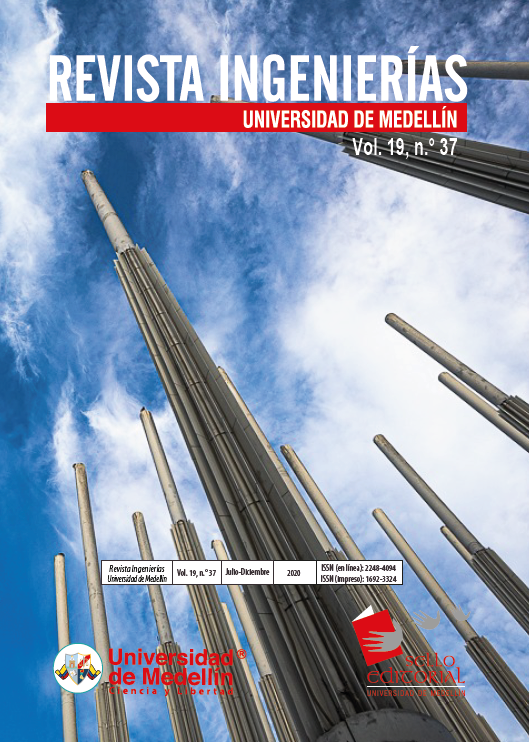A Curriculum Design Approach by the Means of a General Morphological Analysis
Main Article Content
Abstract
The context of conceiving, designing, implementing, and operating real-world systems and products, namely the CDIO initiative, is a framework for engineering education. It considers 12 standards, which are the reference for curriculum design and assessment. A good implementation of the CDIO standards can be considered as a multi-dimensional complex problem. In order to propose strategies for implementing the CDIO initiative in the Electronic Engineering curriculum at Universidad del Quindío, the General Morphological Analysis (GMA) was used. Some relevant dimensions of the curriculum and their values were contrasted in a cross-consistency assessment (CCA), where 8 dimensions were established, and a total of 34,560 combinations were obtained in the problem space. Through the CCA, the number of coherent combinations was significantly reduced. Finally, these combinations were analyzed to propose the corresponding strategies that are the input for the implementation of the CDIO curriculum in the Electronic Engineering program.
Article Details
References
[1] K. E. Willcox and L. Huang, 'Mapping the CDIO curriculum with network models,' in Proceedings of the 13th International CDIO Conference, 2017.
[2] A. Álvarez and T. Ritchey, 'Applications of General Morphological Analysis From Engineering Design to Policy Analysis,' Acta Morphol. Gen. AMG, vol. 4, no. 1, 2015.
[3] J. I. Marín et al., 'Conceptual Verification of CDIO Skills in the Electronic Engineering Curriculum at Quindío University,' in Proceedings of the 13th International CDIO Conference, 2017.
[4] Australian Government - Office for Learning & Teaching, 'Curriculum Design Workbench (Tool) | Assuring Learning.' [Online]. Available: http://www.assuringlearning.com/curriculum-design-workbench-tool. [Accessed: 17-Sep-2018].
[5] E. F. Crawley et al., Rethinking Engineering Education, 2014. DOI: https://doi.org/10.1109/FIE.2017.8190506
[6] H. W. J. Rittel and M. M. Webber, 'Dilemmas in a General Theory of Planning,' Policy Sci., no. 4, pp. 155-169, 1973. DOI: https://doi.org/10.1007/BF01405730
[7] T. Ritchey, Wicked problems-social messes: Decision support modelling with morphological analysis, Berlin: Springer, 2011.
[8] A. Álvarez and T. Ritchey, 'Applications of General Morphological Analysis,' Acta Morphol. Gen., vol. 4, no. 1, pp. 1-40, 2015.
[9] 'CDIO Vision | Worldwide CDIO Initiative.' [Online]. Available: http://cdio.org/cdio-vision. [Accessed: 13-Sep-2018].
[10] 'CDIO Standard 2.1 | Worldwide CDIO Initiative.' [Online]. Available: http://www.cdio.org/content/cdio-tandard-21. [Accessed: 15-Sep-2018].
[11] 'CDIO Syllabus 2.0 | Worldwide CDIO Initiative.' [Online]. Available: http://cdio.org/benefits-cdio/cdio-syllabus/cdio-syllabus-topical-form. [Accessed: 13-Sep-2018].
[12] National Instruments, '¿Qué es LabVIEW? - National Instruments,' 2018. [Online]. Available: http://www.ni.com/es-co/shop/labview.html. [Accessed: 15-Sep-2018].
[13] I. Johansen, 'Scenario modelling with morphological analysis,' Technol. Forecast. Soc. Change, vol. 126, pp. 116-125, Jan. 2018. DOI: https://doi.org/10.1016/j.techfore.2017.05.016
[14] J. Biggs and C. Tang, Teaching for Quality Learning at University. 2007. DOI: https://doi.org/10.1097/00005176-200304000-00028
[15] T. Ritchey, 'General morphological analysis as a basic scientific modelling method,' Technol. Forecast. Soc. Change, vol. 126, no. May 2017, pp. 81-91, 2018.DOI: https://doi.org/10.1016/j.techfore.2017.05.027
[16] T. Ritchey, 'Principles of Cross-Consistency Assessment in General Morphological Modelling,' Acta Morphol. Gen., vol. 4, no. 2, pp. 1-20, 2015.





